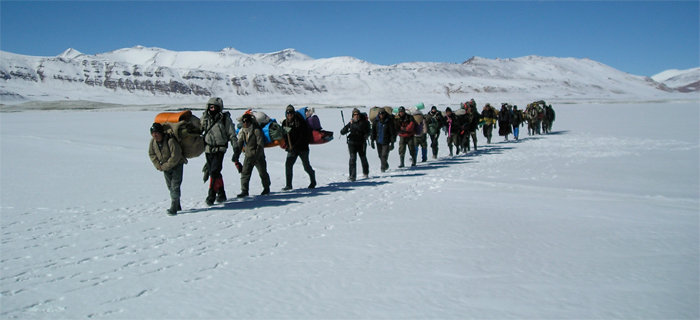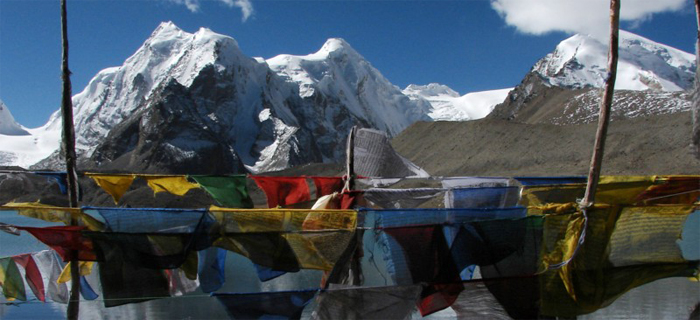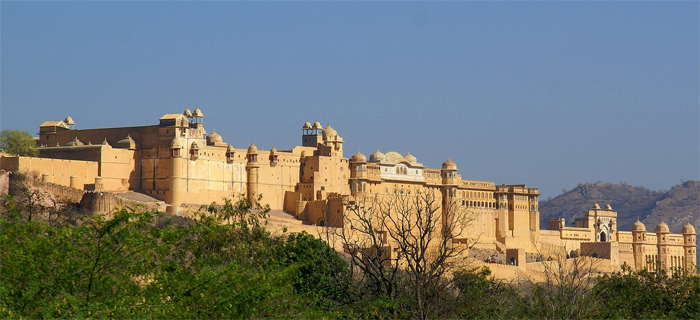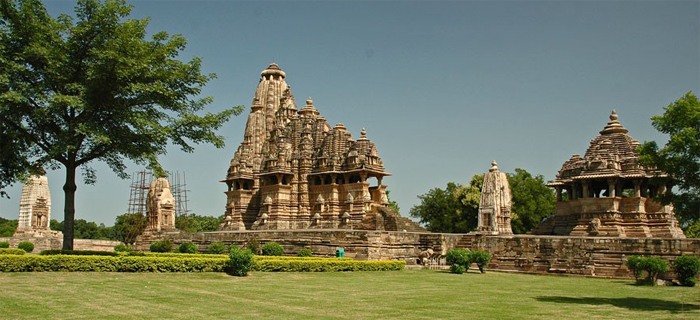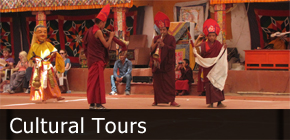Places to Visit in India
Delhi
New Delhi is the Capital of India is the fastest growing large city in India, rapidly catching up the colonial cities of Bombay and Calcutta in size, and long since eclipsing them in political importance. In some are it remains a spacious garden city, tree-lined and with beautiful parks. Delhi today is essentially 4 cities, spreading over the remains of nearly a dozen earlier centers, which once occupied this vital strategic site.
Delhi Old
The oldest is now know as "Old Delhi " or Shah Jahanabad built by the Mughal Emperor Shah in the first half of the 17th century. Focusing on the great imperial building of the Red Fort and the Jama Masjid, this old City is a dense network of narrow alleys and tightly packed markets and houses, Muslim, Sikhs and Hindus living side by side.
Agra
One of the great Mughal cities of South Asia, with minor interruptions. Agra alternated with Delhi as the capital of their empire. Little is known about it before the Muslim conquest. Agra stands on the right bank of the river Yamuna, site of Love's most splendid monument, the Taj Mahal. Agra was founded by the first Aryan settlers, and named " Arya Graha" which with time was shortened to Agra.
Jaipur
Sawai Jai Singh II, the Maharaja of the Kachhwaha Clan of Rajputs, who ruled from 1699-1744, founded Jaipur (City of Victory) in 1727. The city is a highly distinctive city. Built with ancient Hindu building suggests a decline in architectural power and originality. The "pink" a traditional color of welcome, was paint added in 1853 in honor of the visit by Prince Albert, and the tradition has survived to this day.
Bikaner
Bikaner takes its name from Rao Bhikaji the sixth son of the Rathor Rajput prince Rao Jodha, the founder of Jodhpur. Bhika set up his independent kingdom in 1488 like Jaisalmer, it developed as a center of the cross-desert caravan trade, but a defensive site was necessary to give its ruling princess protection. The rocky outcrop in the desert provides a dramatic setting for the Junagarh fort.
Periyar
Periyar Wildlife Sanctuary in the cardamom hills on the border of Tamil Nadu and Kerala. Periyar was established in 1934 and is one of the largest sanctuaries in India. It is one of the best sanctuaries in which to observe herds of elephants. The 21-mile long lake is artificial, built by the British in 1895 for irrigation purposes. The scenery shapes and colors often remind people of the Scottish Highlands. Viewing is best by boat at sunrise and sunset - there is also a rich variety of bird life and other animals that may be seen include bison, wild boar, and sambar.
Mumbai
300 years ago, the area occupied by this great metropolis was seven islands inhabited by Koli men (from we have the world "coolies") and their families. With land reclamation the islands were connected, so that now Bombay occupies a narrow isthmus. The British acquired these marshy and malarial islands for a pittance. Mumbadevi or Mumbai (from which Bombay get its name), was part of Catherine of Braganza's marriage dowry when she married Charles II in 1661. Four years later, the British took possession of the remaining islands and neighboring mainland area and in 1668 the East India Company leased the whole are for pound 10 sterling per year, which was paid for nearly fifty years.
Kolkata
Kolkata once the capital of British Indian, this city has a turbulent past. It was the center in the struggle for Indian independence and thousands of Bengali refugees came her at the start of the 1900's. It can be overwhelming with its striking contrasts. The unusual sights, the pungent smells and the chaotic sounds of this city are an experience unique to India. Kolkata has inspired passionate view. By 1780 the high quality of the British housing in Kolkata let to the nickname "village of palaces", but the Indian settlement was already desperately squalid.
Trichy
The city of Trichy which is dominated by the Rock Fort Temple. The temple can be reached by an almost endless, steep flight of steps cut into tunnel through the rock, only Hindu's are followed to enter the sanctum at the summit or the temple half way up. Also visit Srirangam, this superb temple complex is spread over an island in the Cauvery River, the Ranganbha Temple dedicated to Vishnu is one of the biggest temples in India. Later this afternoon drive out to Tanjore which is 52 kms to the east of Trichy.
Ajanta Ellora Caves
Ajanta Caves 100 kms from Aurangabad and located in a pass in the Vindhya Hills. In 1819 a company of British soldiers on a tiger hunt stumbled on this series of remarkable caves, which have become a treasure trove of Buddhist art (2nd century BC to 7th century AD). As late as the 1920s Murray's Handbook declared them 'quite out of the range of the ordinary tourist'. Today when we came upon this lost world, it seems as secluded and restful as a Cistercian monastery. The wall paintings lovingly illuminate the Buddhist stories in flowing colors: real, live, sensuous characterizations, without the rigid heretic postures one normally expects – an art form sanctioned by a transcendental philosophy, where lovers drink wine together and handsome kings and beautiful princesses sit serenely on their thrones attended by adoring handmaidens.
Ellora Caves, 30 kms from Aurangabad lying near an important ancient trade route between Ujjain in Madhya Pradesh and the West coast, the caves are through to be the work of priests and pilgrims who used the route. Unlike the caves at Ajanta, Ellora' s caves were never lost, but they were abandoned and forgotten. There are 34 caves, cut out of the volcanic lavas of the Deccan Trao. !2 are Buddhist ( created from approximately 600-800 AD) 17 Hindu ( 600-900 Ad ) and 5 Jain ( 800-1100 AD )
Orcha
The Bundela chief Raja Rudra Pratap (1501-31) chose an easily defended and beautiful site for his capital. Set on an island on a bend in the Betwa River, it is elevated above the surrounding wooded countryside. Once capital of its own state. Orcha contains three palaces, each built by succeeding Maharajas in a similar style and combing to form a complex as imposing as that at Udaipur.
Varanasi
Varanasi is situated on the West Bank of the Ganga at a point where it sweeps in a Great Bend North before resuming its South East course to the sea. India's most sacred city, it was probably already an important town by the 7th century BC when Babylon and Nineveh were at the peak of their power. The Buddha came to it in 500 BC and it was mentioned in both the Mahabharata and the Ramayana. It derives its name from 2 streams, the Varuna on the North side of the city and the Assi, a small trickle on the South. Baranas is a corruption of Varanasi. It also called Kashi, " The City of Light" by Hindus who as a mark of respect add the suffix ji to it. It is one of the seven Sacred Cities of Hinduism.Varanasi is situated on the West Bank of the Ganga at a point where it sweeps in a Great Bend North before resuming its South East course to the sea. India's most sacred city, it was probably already an important town by the 7th century BC when Babylon and Nineveh were at the peak of their power. The Buddha came to it in 500 BC and it was mentioned in both the Mahabharata and the Ramayana. It derives its name from 2 streams, the Varuna on the North side of the city and the Assi, a small trickle on the South. Baranas is a corruption of Varanasi. It also called Kashi, " The City of Light" by Hindus who as a mark of respect add the suffix ji to it. It is one of the seven Sacred Cities of Hinduism.
Khajuraho
The temples at Khajuraho were built under later Chandela kings between 950 and 1050 AD in a truly inspired burst of creativity. Of the original 85 temples, the 25 surving are among the finest in India. They are built mostly of a find sandstone from Panna in shades ranging from pink through buff to pale yellow although granite was used in a few.
Ranthambore
Ranthambore lies on the easternmost spur of the Arrivallis. It has both the old fort and the Sawaimadhopur Ranthambore wild sanctuary. Situated on the 215m high rock 19 km north east of Sawaimadhopur, the Chauhan fort was built in 944 and over the next 6th centuries changed and on a number of occasion. Set in 400sq km of dry deciduous forest, this became the private tiger reserve of the Maharaja of Jaipur. The approach of the park along and narrow valley from the west. Tiger can occasionally be seen in the day time. There are also few leopards, Numerous herds of sambar, Nilgai, Sloth, Bear, Zackal, Crocodile, the occasional Rear caracan and a rich variety of birds.
Garhwal
Garhwal land of adventure, its mountains with than 100 peaks towering above 6000 mts, draw the climber and trekkers. Although the Garhwal Himalayans is little known as a trekking region, it boasts a number of famous peaks including Trisul and India's famous mountain, Nanda Devi. There are also many important pilgrimage sites, such as Badrinath and Kedarnath or Gaumukh, the actual source of the Ganges. The trekking routes pass through rich, green forests and cross beautiful meadows carpeted with flowers in summer. Glistening glaciers complement the soaring Himalayan peaks.
Bandhavgarh National Park
The park is density of the tiger population at the highest know in India. This is also White Tiger country. These have been found in the old state of Rewa for man years. Bandhavgarh is densely populated with other species: the great gaur, or Indian bison, can be seen with ease, as they come into the meadows to graze at dusk: sambar and barking deer are a common sight, and nilgai are to be seen in the more open areas of the park. Covering 448 sq km, Bandhavgarh is situated in Shahdol district among the outlying hills of the Vindhya range. The terrain is of great rocky hills rising sharply from the swampy and densely forested valley bottoms.



